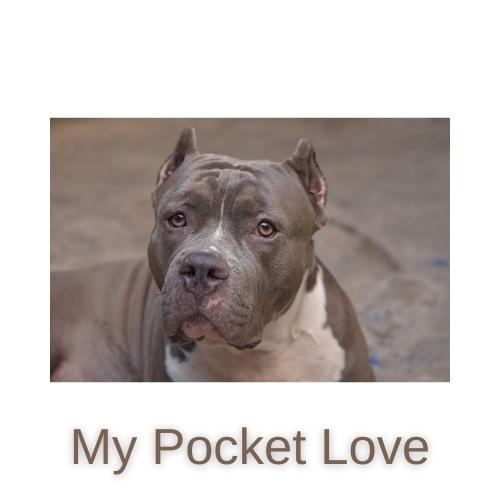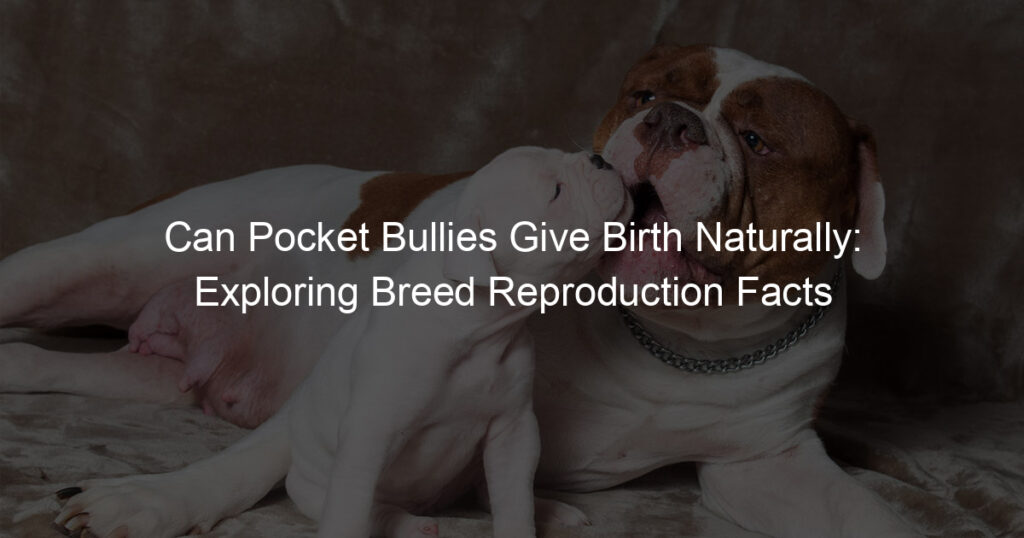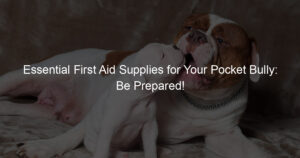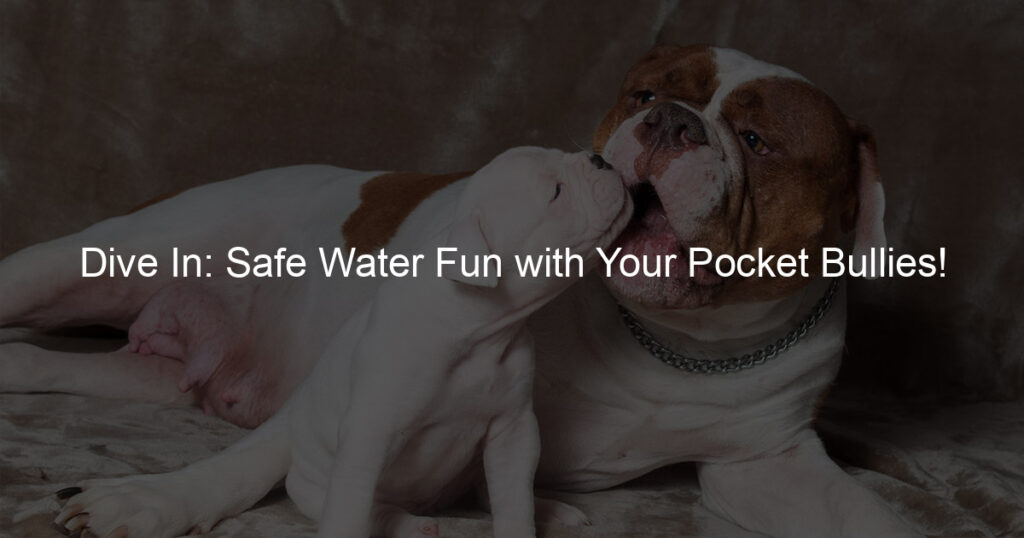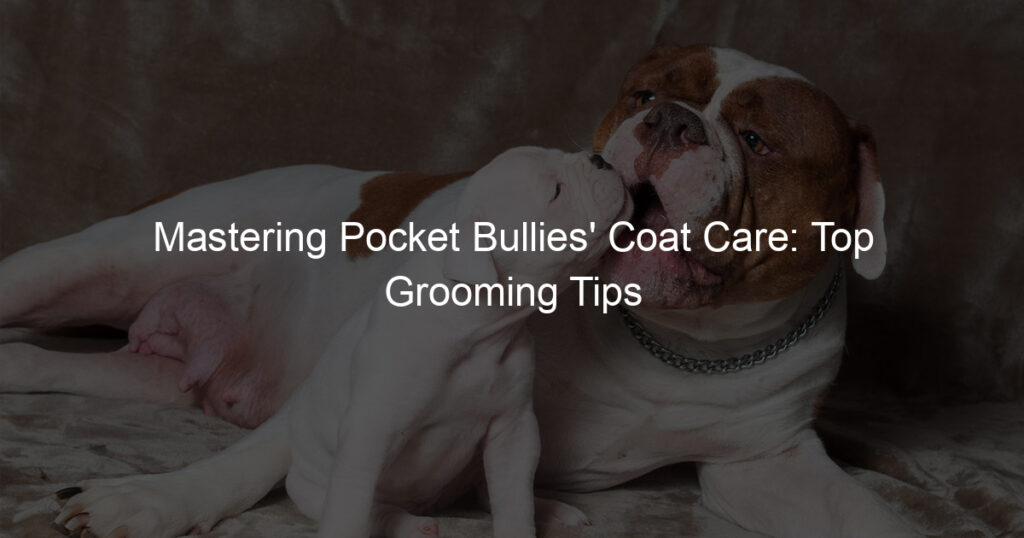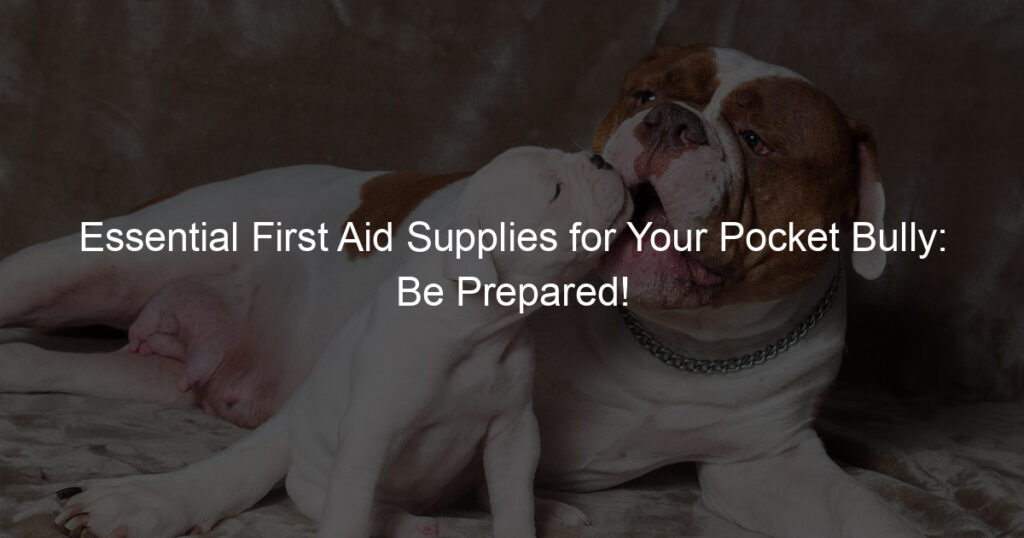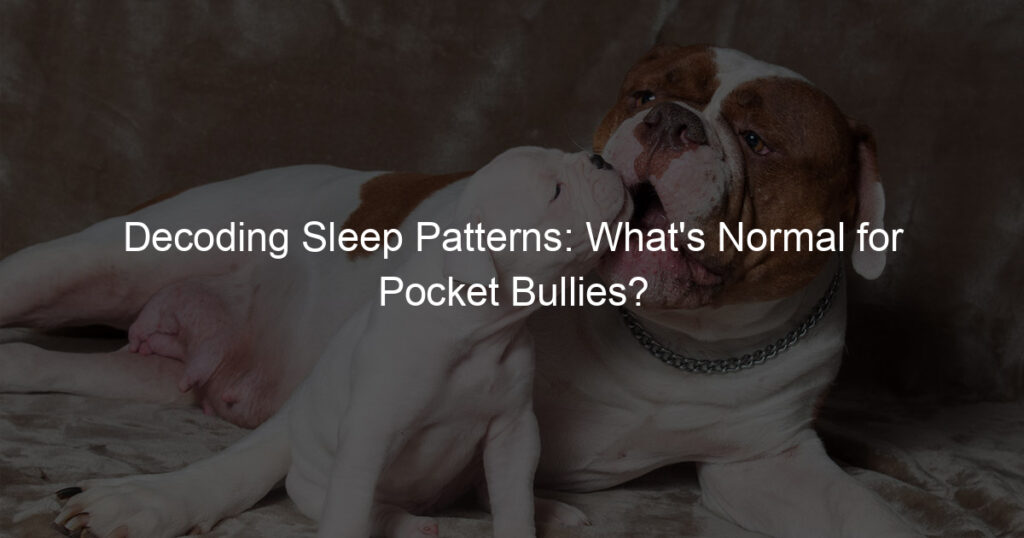Pocket Bullies have recently gained popularity as a breed, largely due to their charming and affectionate nature. However, with their strong muscular build and compact size, questions often arise about whether these dogs can safely give birth naturally.
In this article, we will explore can Pocket Bullies give birth naturally and the factors contributing to a Pocket Bully’s ability to successfully go through the birthing process and the possible complications that may arise.
Pocket Bullies, also known as American Bully Pocket, are a small-sized version of the American Bully breed. They are muscular, compact, and have a sturdy frame, which makes them sturdy and adept for various activities.
However, their unique body structure does raise concerns about their ability to give birth naturally, and it is essential to understand the health considerations involved in their breeding and birthing process.
By understanding Pocket Bullies’ pregnancy, health considerations in breeding, and care after their birth, breeders can make better-informed decisions regarding their dogs’ well-being.
Potential issues in natural birth may indeed arise, but by being prepared and discussing these concerns with a veterinarian, potential risks of breeding and natural birth can be minimized for the safety of both the mother and her puppies.
Key Takeaways
- Pocket Bullies’ unique structure raises concerns about their ability to give birth naturally
- Understanding health considerations can aid in making informed breeding decisions
- Consulting with a veterinarian is essential to minimize potential risks during natural birth
Can Pocket Bullies Give Birth Naturally
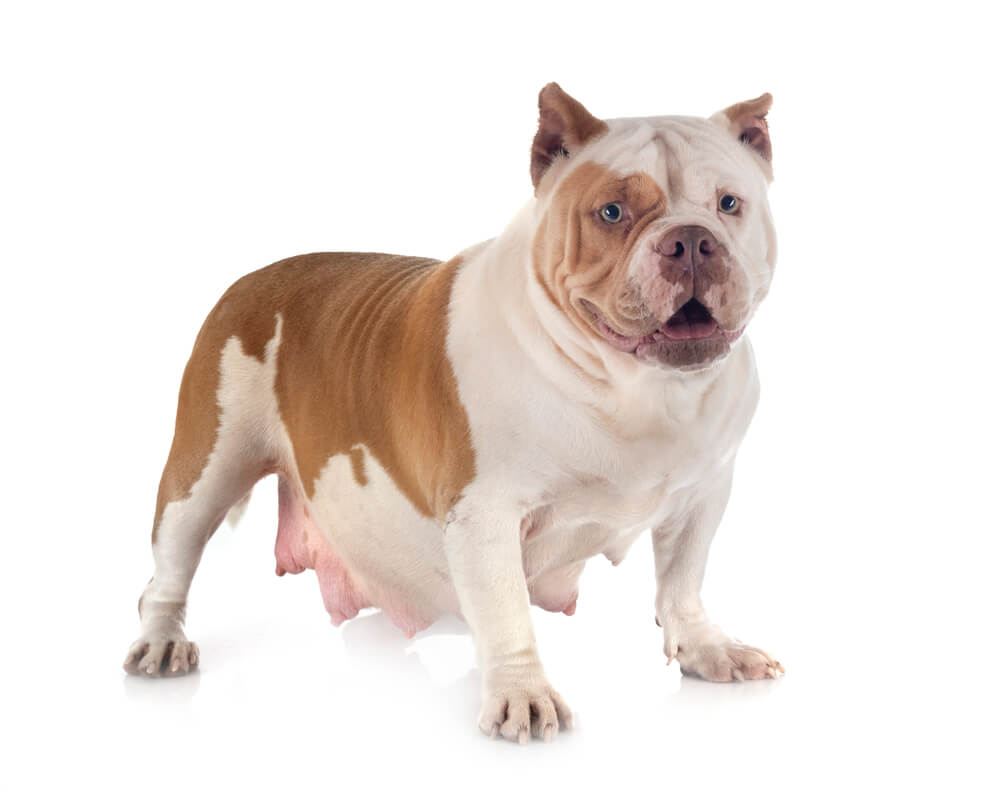
When discussing the breed of dog known as Pocket Bullies, it’s essential to have a clear understanding of their history, size, and temperament.
Pocket Bullies are a type of American Bully, which is a breed developed from a mix of American Pit Bull Terrier and American Staffordshire Terrier.
I am confident in saying that these dogs have a very distinct appearance, characterized by their muscular build and short coat.
The history of the Pocket Bully can be traced back to the American Bully breed, which began as a designer dog, created through breeding programs that focused on specific traits.
This breed has evolved over the years, and today there are several recognized sizes under the American Bully Kennel Club (ABKC) standards.
Pocket Bullies are the smallest of these size categories, yet they still manage to maintain the muscular build that American Bullies are known for.
In terms of height, size, and overall build, Pocket Bullies are indeed small dogs, typically standing between 14 and 17 inches at the shoulder. Their size is what sets them apart from other breeds in the American Bully family, such as the micro bully and the French Bulldog.
Yet, despite their comparatively small stature, these dogs are still quite muscular and strong.
One of the key features that I find fascinating about Pocket Bullies is their color variety. These dogs come in an array of colors, including but not limited to black, blue, fawn, and brindle. Their short coat not only showcases their beautiful colors but also makes grooming relatively simple.
As a knowledgeable observer of the breed, I can attest that their temperament is generally friendly and loving. Pocket Bullies are known to be intelligent, eager to please, and loyal to their families. This makes them excellent companions for those who appreciate the breed’s unique characteristics.
Nonetheless, it’s crucial to remember that, like any mixed breed, there could be some variations in temperament or size depending on the specific lineage of each individual Pocket Bully.
While adhering closely to the breed standard is desired in breeding programs, there may still be some level of variation, particularly in dogs that come from less-regulated breeding environments.
In conclusion, Pocket Bullies are a unique and captivating breed of dog. Their small size, muscular build, and friendly temperament truly set them apart from other breeds in the American Bully family.
Pocket Bullies Pregnancy
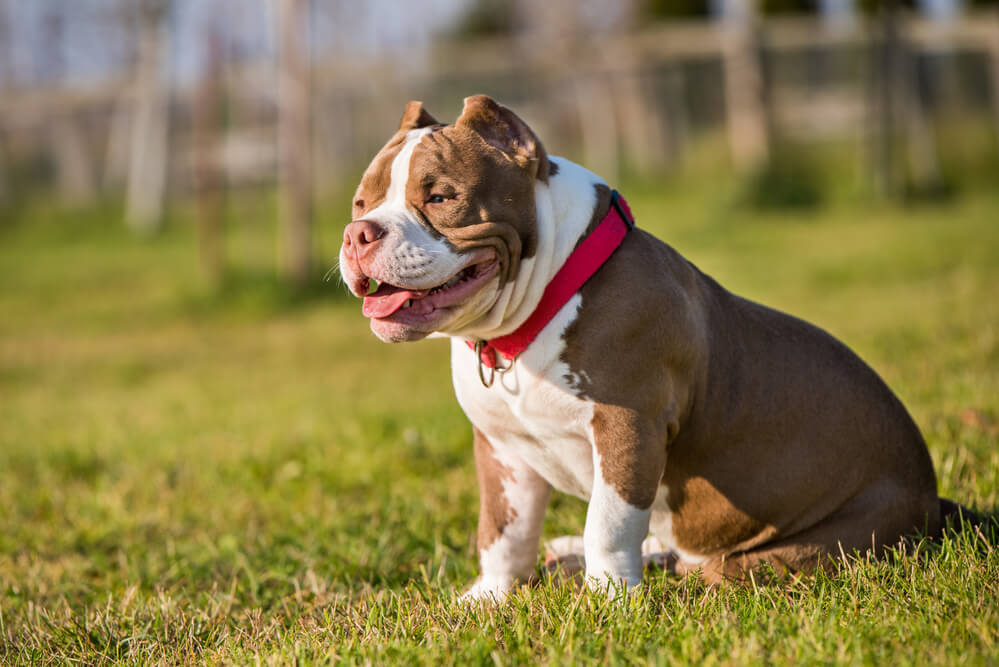
As an owner of a Pocket Bully, it’s essential to understand pregnancy and its various stages. Becoming familiar with the gestation period and due date helps me provide the best care for my pregnant dog.
The gestation period for Pocket Bullies typically lasts between 58 and 65 days. Once my dog becomes pregnant, I mark her due date on the calendar, counting forward from the time of fertilization.
During pregnancy, I observe various physical changes in my Pocket Bully. Her abdomen expands, and she may display increased tiredness, mood swings, and food cravings. I pay close attention to these signals to meet her changing needs.
The pregnancy can be split into three stages. In the first stage (0-21 days), fertilization occurs, and the embryos attach to the uterine wall. During the second stage (22-42 days), the fetal development rapidly progresses. Finally, the third stage (43-63 days) involves continued fetal growth and preparation for birth.
Throughout the length of the pregnancy, I focus on maintaining my dog’s health and well-being. I ensure she has proper nutrition, exercise, vet check-ups, and a comfortable environment in which to give birth.
In conclusion, managing a Pocket Bully’s pregnancy requires understanding the various stages and physical changes. By staying informed and attentive, I can ensure a healthy and comfortable experience for my beloved pet.
Health Considerations in Breeding

When it comes to breeding Pocket Bullies, I prioritize the health and well-being of both the mother and her puppies. Proper care, nutrition, and exercise play crucial roles in maintaining a healthy environment for breeding.
It’s essential for me to work closely with a trusted veterinarian, who can guide me through the process and monitor the dogs for any signs of illness or complications. I ensure that the dogs rest in a comfortable environment, with a focus on cleanliness and quality of their surroundings.
During the pregnancy, I keep a watchful eye on the mother’s weight gain and abdominal development, as these are important indicators of fetal growth. In case of any concerns, I consult my veterinarian about conducting diagnostic tests, such as an ultrasound, to examine the puppies’ development and detect any potential risks.
Infections can be a significant threat to the health of the pregnant dog and her puppies. As a responsible breeder, I am mindful of keeping the environment clean and sanitized to minimize the possibility of infections.
Feeding the mother dog with proper nutrition and ensuring regular exercise are essential for her health and the puppies’ development. I adjust her diet as per the recommendations of my veterinarian and make sure she stays active without causing any undue strain on her body.
Dystocia, or difficulty in giving birth, is a common concern in breeding small dog breeds like Pocket Bullies. I am well-versed in recognizing the signs of dystocia and have a plan in place to contact a rescue team or my veterinarian if such complications arise during the birthing process.
In conclusion, by taking the necessary precautions and closely monitoring the health and development of the pregnant dog and her puppies, I strive to minimize risks and complications, ensuring a healthy and successful breeding process.
The Natural Birth Process in Pocket Bullies

I understand that there are concerns surrounding the ability of pocket bullies to give birth naturally. In this section, I will discuss the natural birth process in these dogs, while addressing some of the key points mentioned.
Pocket bullies, like other dog breeds, may experience labor and contractions when they are about to give birth naturally. As the owner, it is essential to recognize the signs of labor, such as panting, restlessness, and nesting behavior.
Being aware of these signs enables you to be proactive and supportive throughout the birthing process.
The natural birthing process typically starts with the first stage of labor, in which contractions help to move the puppies into position for delivery.
This is followed by the second stage when the puppy is expelled from the mother’s body. The blood and fluids released during this event are essential for the puppies’ survival, as they clean the pups and stimulate their breathing.
Although pocket bullies can give birth naturally, it is important to be aware that they may also face some challenges. For instance, these dogs may have difficulty passing larger puppies through the birth canal.
In such cases, it is crucial to consult with a veterinarian to determine if a cesarean section might be necessary to protect the wellbeing of both the mother and her puppies.
Pocket bullies can give birth naturally, and understanding the process can help you support your dog effectively. Further, being vigilant about potential complications ensures a safe delivery and healthy puppies.
Post-Birth Care and Considerations

As a dog owner who has had experience with pocket bullies, I’ve learned that after the birth of the puppies, it’s crucial for me to be attentive and focus on their well-being.
Even though pocket bullies are known for their affectionate and loyal nature, first-time pocket bully mothers may need some assistance in caring for their newborn pups.
While some pocket bullies can give birth naturally, it’s not uncommon for them to have a c-section due to the breed’s large head size in comparison to their compact body.
Breeders and pet owners should be prepared for this possibility. After the birth, it’s essential to observe the puppies closely, ensuring that they are breathing well and growing at a healthy rate.
One important aspect of caring for a litter of puppies is making sure the mother’s nipples are clean and functioning properly. Pocket bullies typically have smaller litters, so there may not be as many puppies competing for their mother’s milk.
Nonetheless, it is still essential to monitor each puppy’s feeding and growth to ensure that they are receiving the proper nutrients.
In addition to providing the mother with a high-protein diet to support her offspring’s growth, it’s crucial to establish a comfortable and safe environment for her to nurse her litter.
Mothers will exhibit nesting behavior, so offering them a quiet and protected space is vital for their well-being and their puppies’ development.
Taking care of a litter of pocket bully pups can be challenging, but by being attentive to the mother’s and her puppies’ needs, dog owners can play a significant role in ensuring the health and successful growth of these beautiful, affectionate animals.
Potential Issues in Natural Birth
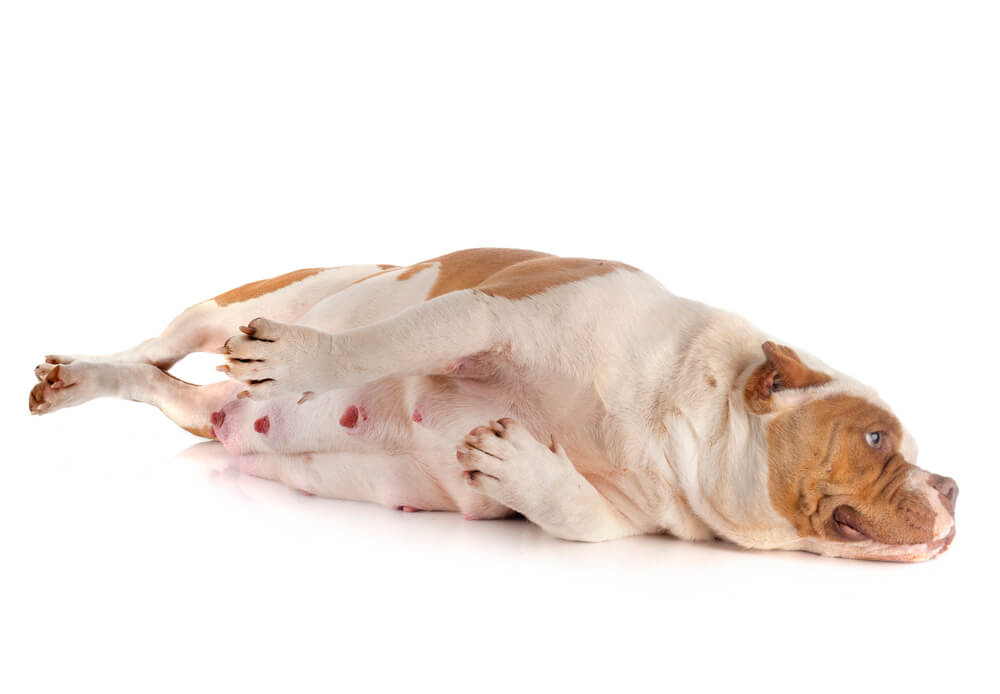
As a responsible owner, I should be aware of the potential issues in natural birth for Pocket Bullies. One of the main issues is dystocia, a term used to describe difficult or abnormal labor.
Due to their compact size and unique physical characteristics, Pocket Bullies often face complications during birth which may result in dystocia. The risks associated with dystocia can be harmful to both the mother and her puppies.
C-section is often recommended by veterinarians to address these complications and minimize risks during labor. While the costs associated with a C-section may be higher than a natural birth, it is crucial to ensure the safety and well-being of my dog and her puppies.
I should always consult a reputable breeder and veterinarian to discuss the best options for my Pocket Bully.
Moreover, there are other factors to consider in order to prevent harm during birth. During pregnancy, monitoring my Pocket Bully through regular check-ups and x-rays is essential.
This can help me to identify any potential issues early on, allowing for necessary interventions to be made before labor begins.
It’s also important for me to be vigilant about the size and health of the potential male dog chosen as a mate for my female Pocket Bully.
The size difference between the potential parents should not be too substantial, in order to avoid difficulties during birth. This can be done by discussing potential mates with the breeder or veterinarian.
In addition, keeping track of the timing of my dog’s labor is crucial. Knowing when my Pocket Bully is due to give birth, I can make necessary preparations and ensure a safe environment for the process.
In some cases, veterinarians may recommend inducing labor to prevent potential complications from arising due to delayed labor.
Lastly, it’s essential to check for any issues in the vulva area of my Pocket Bully when planning for natural birth. This includes monitoring for any signs of infection or abnormal swelling which can hinder the birth process.
Being informed about these potential issues and taking the necessary precautions is key to ensuring a safe and healthy birth for my Pocket Bully and her puppies.
Frequently Asked Questions
Do Pocket Bullies require C-sections for delivery?
While it’s common for some breeds to require C-sections, Pocket Bullies can give birth naturally. However, each dog’s situation is unique, and complications may arise during pregnancy.
It’s crucial to consult with a veterinarian to monitor the pregnancy and discuss the best birthing method for the specific dog.
What are common pregnancy signs in American Bullies?
Common pregnancy signs in American Bullies include a decrease in energy levels, swollen and darkened nipples, increased appetite, weight gain, and behavioral changes, such as increased affection or seeking seclusion.
Remember that the best way to confirm a pregnancy is to consult a veterinarian.
How long is the gestation period for Pocket Bullies?
The gestation period for Pocket Bullies is similar to most dog breeds, which is around 58 to 68 days, with the average being 63 days. Again, it’s essential to work closely with a veterinarian to monitor the pregnancy and ensure the dog receives proper care.
What factors determine if a Pocket Bully can give birth naturally?
Several factors can impact whether a Pocket Bully can give birth naturally. These include the size and position of the puppies, the mother’s health, and the presence of any pre-existing health conditions.
A veterinarian can evaluate these factors and recommend the best course of action for a safe delivery.
When do Pocket Bullies go into heat?
Pocket Bullies typically have their first heat cycle between 6 to 12 months of age. After the initial cycle, most dogs will go into heat every six months. It’s essential to monitor the dog’s heat cycle if breeding is being considered and ensure the dog is in optimal health.
How can one monitor an American Bully’s pregnancy week by week?
To monitor a Pocket Bully’s pregnancy week by week, regular veterinary checkups are crucial. A veterinarian can use ultrasound, X-rays, and palpation to assess the pregnancy’s progress and detect any potential issues.
In addition, maintenance in proper diet, exercise, and care is vital throughout the entire pregnancy.
